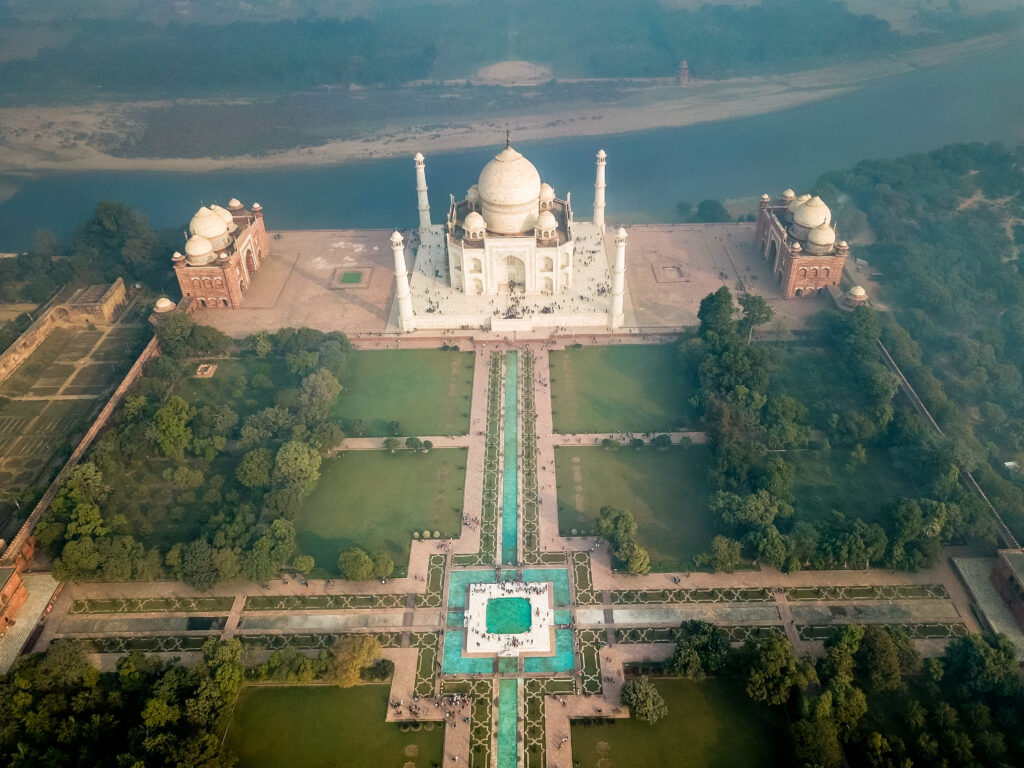The Taj Mahal, an epitome of architectural beauty and eternal love, stands majestically on the banks of the Yamuna River in Agra, India. Commissioned by the Mughal Emperor Shah Jahan in memory of his beloved wife Mumtaz Mahal, this iconic structure is not merely a mausoleum but a symbol of enduring love and meticulous craftsmanship.
**1. A Labor of Love:**
Constructed over two decades, from 1632 to 1653, the Taj Mahal is a testament to the deep love Shah Jahan harbored for Mumtaz Mahal. The white marble mausoleum is said to represent the emperor's undying love, with intricate carvings and delicate details adorning its façade.
**2. Architectural Marvel:**
Designed by the Persian architect Ustad Ahmad Lahori, the Taj Mahal seamlessly blends Persian, Islamic, and Indian architectural styles. The central dome, minarets, and intricate geometric patterns reflect a level of architectural sophistication that has made the Taj a UNESCO World Heritage Site.
**3. Meticulous Craftsmanship:**
The craftsmanship involved in creating the Taj Mahal is awe-inspiring. Skilled artisans and craftsmen from various parts of the Mughal Empire were involved in the construction. The inlay work of precious and semi-precious stones into the marble, known as "pietra dura," is a testament to the mastery of Mughal artisans.
**4. Gardens and Symmetry:**
The Taj Mahal is surrounded by meticulously laid out gardens, divided into quadrants by reflecting pools. The reflection of the mausoleum in the pools creates a mesmerizing effect, enhancing the symmetrical beauty of the complex. The charbagh, or four-part garden, is a nod to traditional Persian garden design.
**5. Changing Hues:**
One of the magical aspects of the Taj Mahal is its ability to change hues throughout the day. From the soft hues of dawn to the warm glow of sunset, the white marble reflects different shades, creating an ever-changing visual spectacle.
**6. Cultural Significance:**
Beyond its architectural significance, the Taj Mahal holds cultural importance as a symbol of India's rich history and the Mughal era. It attracts millions of visitors annually, making it one of the most visited monuments globally.
**7. Preservation Efforts:**
Preserving the Taj Mahal's pristine beauty is an ongoing challenge due to environmental factors and the sheer volume of visitors. Conservation efforts, including cleaning and restoration projects, are continually underway to ensure the longevity of this architectural marvel.
In conclusion, the Taj Mahal stands as a timeless testament to love, art, and architectural brilliance. Its enduring beauty and cultural significance continue to captivate hearts and minds, making it not only a jewel of India but a global symbol of romance and craftsmanship.

